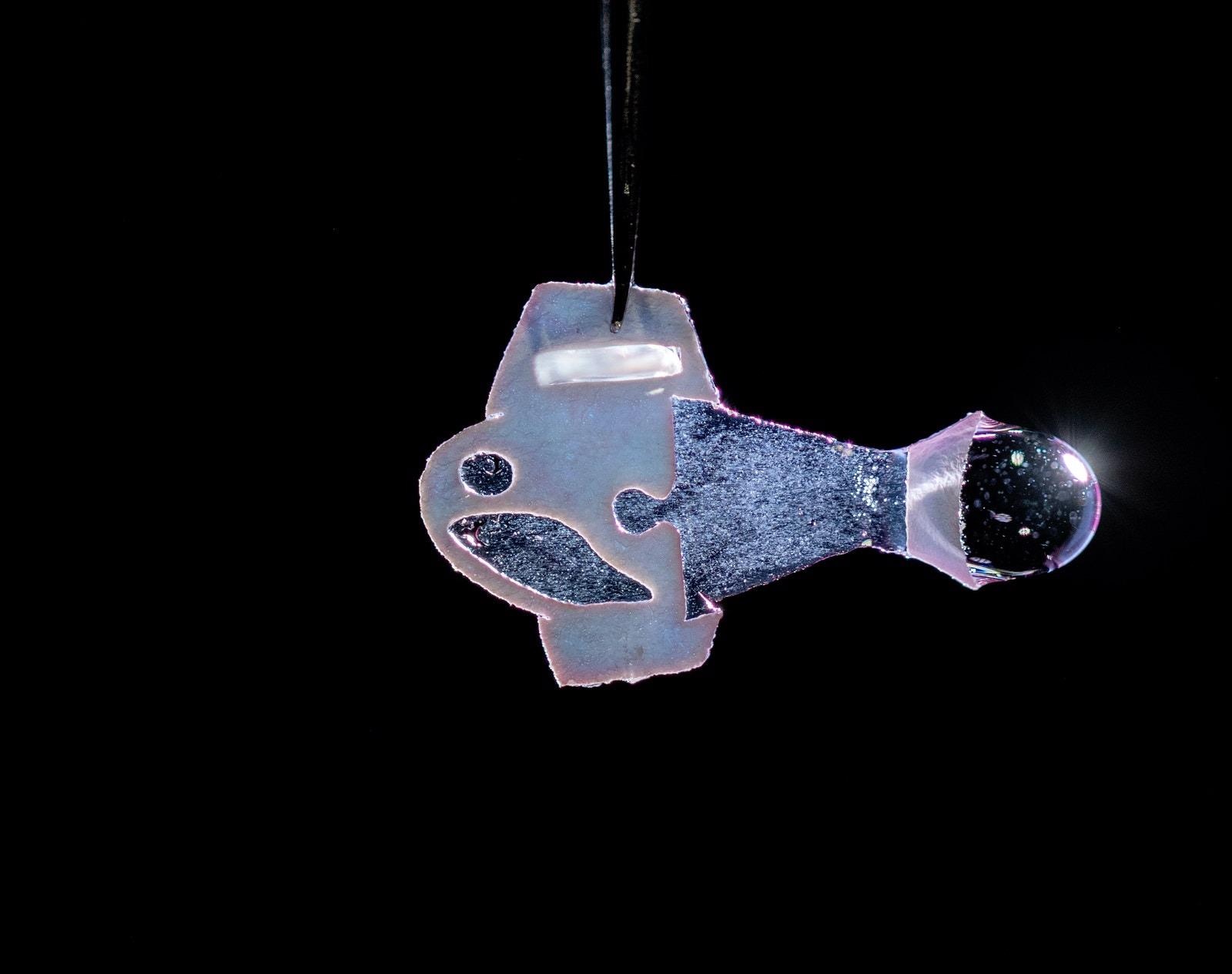Researchers in the United States have designed the world’s first fully autonomous biohybrid device using human stem-cell-derived cardiac muscle cells. The biohybrid fish swims by mimicking the muscular contractions of a human heart, opening up new opportunities for engineering artificial hearts and studying heart disease.
 Image Credit: Burrows, L., (2022) Biohybrid fish made from human cardiac cells swims like the heart beats. [online] Available at: https://wyss.harvard.edu/news/biohybrid-fish-made-from-human-cardiac-cells-swims-like-the-heart-beats/
Image Credit: Burrows, L., (2022) Biohybrid fish made from human cardiac cells swims like the heart beats. [online] Available at: https://wyss.harvard.edu/news/biohybrid-fish-made-from-human-cardiac-cells-swims-like-the-heart-beats/
Current research on artificial heart design focuses on modeling the anatomical structures of the human heart. However, modeling its biophysical processes is far more challenging.
Now, rather than using heart imaging as a blueprint, we are identifying the key biophysical principles that make the heart work, using them as design criteria, and replicating them in a system, a living, swimming fish, where it is much easier to see if we are successful.
Dr. Kit Parker, School of Engineering and Applied Sciences, Harvard University
A Brief Introduction to Biohybrid Robots
To date, soft robotics is a growing area of research enabling the design of adaptable robots which are engineered from flexible materials and behave like living organisms. Due to their mimicry of these organisms, soft robots interact well with the human body, thereby enabling the development of new medical applications.
The concept of biohybrid robots goes one step further. It incorporates living tissue into the structure of robots.
Through motion pictures, we have become familiar with the concept of cybernetic organisms, where the organic capabilities of humans are augmented by technology integrated into their bodies. In biohybrid robots, it is the opposite, where organic tissue is used to augment the capabilities of technology.
Organic tissue has several advantages over inorganic metals and plastics. For example, it is able to regenerate. Therefore, biohybrid robots built from organic material may become fully autonomous, able to self-assemble or recover from damage.
Within this context, it seems logical that muscle could be used as a replacement for gears, cables and motors in robots. In one experiment, engineers at the University of Tokyo developed a robotic finger that was able to pick up objects.
Another advantage of incorporating muscle in robotics design is that it reveals a lot about the functioning of the human body.
Designing a Biohybrid Robotic Fish
The Harvard team based their device on the motion of the zebrafish. Zebrafish are excellent model organisms because they are vertebrates that share genetic similarities with mammals.
One layer of muscle cells was incorporated into each side of the robotic fish’s tail fin. The muscle cells were grown from human stem cells. A mechano-electrical protein channel was laid in each layer of muscle cells.
As one side of the fish stretched, this channel would open, immediately causing a contraction. Simultaneously, on the other side of the fish, the contracted channel would stretch. Thus, the fish could move its fin and swim.
Most importantly for the study, this closed bioelectric feedback loop generated by the mechano-electrical channel closely resembles the rhythmic beating of the human heart.
The researchers also fitted a pacing node similar to a pacemaker that enabled the generation of coordinated and continuous back-and-forth fin movements. The fish could swim for 100 days uninterrupted, thus demonstrating that it is possible to design a long-lasting muscular pump using cardiac cells derived from human stem cells.
The results highlight the role of feedback mechanisms in muscular pumps such as the heart.
Dr. Keel Yong Lee, School of Engineering and Applied Sciences, Harvard University
Moreover, muscle contractions, coordination and swimming speed increased in the first month as the muscle cells matured until the robotic fish could reach speeds comparable to wild zebrafish.
The Harvard study provides a platform for studying cardiovascular physiology and opens up new avenues for the development of artificial hearts.
This new research provides a model to investigate mechano-electrical signaling as a therapeutic target of heart rhythm management and for understanding pathophysiology in sinoatrial node dysfunctions and cardiac arrhythmia.
Dr. Sung-Jin Park, School of Engineering and Applied Sciences, Harvard University
References and Further Reading
Parker, K., et. al., (2022) An autonomously swimming biohybrid fish designed with human cardiac biophysics. Science, [online] Vol. 375 No. 6581. Available at: https://www.science.org/doi/10.1126/science.abh0474
Morimoto, Y., et. al., (2018) Biohybrid robot powered by an antagonistic pair of skeletal muscle tissues. Science Robotics, [online] Vol 3 No. 18 Available at: https://www.science.org/doi/10.1126/scirobotics.aat4440
Burrows, L., (2022) Biohybrid fish made from human cardiac cells swims like the heart beats. [online] Available at: https://wyss.harvard.edu/news/biohybrid-fish-made-from-human-cardiac-cells-swims-like-the-heart-beats/
Disclaimer: The views expressed here are those of the author expressed in their private capacity and do not necessarily represent the views of AZoM.com Limited T/A AZoNetwork the owner and operator of this website. This disclaimer forms part of the Terms and conditions of use of this website.